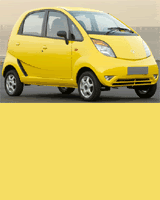Omani jewellery rings
Posted on
Tuesday, January 13, 2009
by DSLR MASTER

MOST antique shops in the Muttrah souk have an open container with odds and ends thrown in key chains, hair ornaments, pendants and an entire selection of silver rings of different shapes and sizes.
Customers who are blue blood collectors sit and patiently sift through the semi-precious rubble to find what they are looking for. "I am leaving the country in a few days and I want to complete my collection of Omani silver," says a French collector bending over the silver bric-a-brac. In her hand she carries the photocopy of a dog-eared page from the work Omani Silver by Ruth Hawley.
"I am taking back a sample of each item of Omani jewellery and now need to find only the finger rings", she says putting her head back to work to find the missing objects, oblivious of the retail chatter round her. Countries of the Arabian Peninsula are well-known for their unique finger rings.
H R P Dickinson in his book The Arab of the Desert says that in some Middle East countries up to four rings are worn on one hand at one time. Women in Oman have done better. They used to wear a ring on each finger. Five rings on a hand — ten on both hands! In Oman, until not so long ago, rings were made in pairs.
It was the practice to give the bride a gift of ten rings — with one design for each finger. Each ring had a special name and some of them also had a purpose in addition to ultimate adornment.
There was no special wedding ring every finger was already adorned. Ruth Hawley says that it is very difficult to be precise about the name of the various pieces of silver in Oman as the name varies from place to place.
The name for a ring in the Muttrah souk may be entirely different from what it is called in the Nizwa souk. There was a deep belief that silver possessed qualities to shield the wearer from the evil eye and also had the ability to ward off disease. Both men and women have worn talisman rings for centuries.
The origins of designs found on Omani rings date back thousands of years. Some designs are difficult to trace with accuracy. It is presumed that geometric designs originated from Yemen. The Nizwa design of flowers date back to the T'ang or Liao dynasty of the 10th century, a period when Oman had trade links with China. The dome shaped cage ring was possibly of a Jewish wedding ring design.
The techniques used in the crafting of rings included chasing, engraving, piercing, filigree work and granulation. Each part of the ring had a name. The hoop of a finger ring is called the khawatim. The decorated upper part, the bezel and the encompassing band usually holding the design or stone is the collet. In addition, the rings for each finger had a different name.
Silver was melted in a crucible over a charcoal hearth. It was then rolled into sheets or rods that were then cut and shaped in a brazier. All the rings of yore were made in silver and some were treated to a gold wash.
Silver rings of different shapes and sizes. The most important ring is that worn on the index finger or fore finger known in Arabic as the al shahid. The khawatim shahadah is shaped like a large drop (sometimes stylised) but always with a pointed tip. It is important to note that this ring is known by just one name.
In Oman, until not so long ago, rings were made in pairs. It was the practice to give the bride a gift of ten rings — with one design for each finger. The ring worn on the thumb is a wide silver band called the jabiyrah. This ring is also referred to as batham, maramiy or ha'is masbuwqah.
The ring for the second finger is rounded or rhomoid and has several names — it is called mahar and also referred to endearingly as Abu Fawz or khatim abu fawz. The third finger is always adorned with a square called kanabir or khatim abu sath murabba.
The ring for the little finger, khanafir, was the only one that was embellished with a stone. This ring was usually made from a common umla (coin) and in size was smaller than the rings that adorned the other fingers.
Rings worn on the toes were simple with bosses — a round knob or stud or other protuberance. Rings for men were usually set with the fairuz — a turquoise stone.
Gold has usurped the place of silver and it is the yellow metal that is now preferred for rings and other ornaments. But there are collectors like the French aficionado at the souk who are looking only for the silver with history. She planned to display her Omani silver collection. What better peg for an after dinner story about men who gifted their women with a ring for each finger?
posted by DSLR MASTER @ 12:21 AM
2 Comments
![]()
![[silver+oman+copy.gif]](https://blogger.googleusercontent.com/img/b/R29vZ2xl/AVvXsEiCUmYwbOM5U6NEJGFmHiQRSUn_YIbfgg_IO0fpKchiHobQYwN6i4IxuIb4lBphVRD8RCzY3M8V1ytTAEsQ1pm702HvQ5XuqTfOiTzW4G7SFylQ3GUJ4XLHzhC63W9oVRw_PdZO/s1600/silver+oman+copy.gif)


![[ring r1148s.jpg]](https://blogger.googleusercontent.com/img/b/R29vZ2xl/AVvXsEh8GJ2PTaTA4v9qjYQGJ-ZyLcazuz7sHJO54uHfOaOJDdNjjhdCzH387DTaxJzBE0lalEy3x5E-5vz422ALxn9Q6iiSBIajcai8V5VT8SAzBn8WxbgeYyzh38v7BAIjOSUVFB6-Lg/s1600/ring+r1148s.jpg)



![[gif-silver.gif]](https://blogger.googleusercontent.com/img/b/R29vZ2xl/AVvXsEhoLOqMHXiHQLzV9m04HoX3Wo9B4T9igL_mvJvtawmQpIr_xadtIKGE8uL16aotdJJ76Q2OII-fIeUbUeM0ly2rTfrU6jVwZFnzlnvReymCopF5HLg6naVF9JnR6FctoPzzQrX03A/s1600/gif-silver.gif)
![[jewellery4.jpg]](https://blogger.googleusercontent.com/img/b/R29vZ2xl/AVvXsEi9EfHHLR-m0sTOsh7Qnr_LT1dH9AUMWqjanWpx8B9VC3pHchDoDlgvC6tAkoBsiJj1MRUxj78rOLkTyyUDnJH56m7BmMDr_5XCHERg-c0YFHSyH6t7IDuP6y0BuFdR5B5R8Q6aVQ/s1600/jewellery4.jpg)

2 Comments:
I love these rings. They look so good.
handmade jewellery
Oh,
yes these have quality.
silver jewelry exporters
Post a Comment
Subscribe to Post Comments [Atom]
<< Home